Cats are enigmatic creatures, often leaving their human companions puzzled by their quirky behaviors. One such behavior is their undeniable attraction to feather wands. This article delves into the reasons behind this feline fascination, exploring the instincts and behaviors that make feather wands an irresistible toy for our furry friends.
Key Takeaways:
- Feather wands tap into a cat's natural hunting instincts, making them an engaging toy.
- Regular play with wand toys can help keep indoor cats physically and mentally stimulated.
- Understanding why cats are drawn to these toys can help pet owners provide better enrichment for their feline friends.
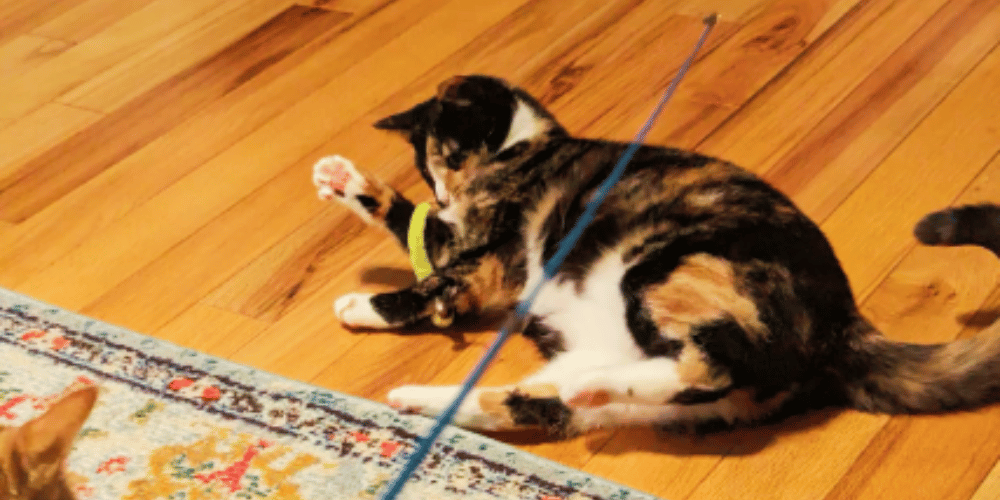
The Allure of the Feather Wand
Have you ever noticed how your feline friend's eyes light up at the sight of a feather wand? It's not just a random preference; there's a science behind it. Cats are hardwired to respond to the slight flutter and movement of feathers, which mimic the motion of real prey, such as birds or mice. This resemblance to elusive prey triggers a cat's natural instincts, making feather wands an excellent tool for encouraging cats to engage in play.
A Reflection of Wild Behavior
Domestic cats share the same hunting instincts as their wild counterparts. In the wild, cats spend a significant amount of time stalking and capturing their meals. Feather wands simulate the unpredictable movements of prey, keeping your cat moving and pouncing as if they were in the great outdoors. This not only provides exercise but also satisfies their ingrained need to chase and catch.
The Importance of Interactive Playtime
Interactive playtime with wand toys is crucial for indoor cats. Unlike their outdoor brethren, indoor cats don't have the same opportunities to hunt and explore. Wand toys provide a way for pet owners to engage with their cats, strengthening the bond between human and pet. These play sessions also help to prevent boredom and health problems associated with a sedentary lifestyle.
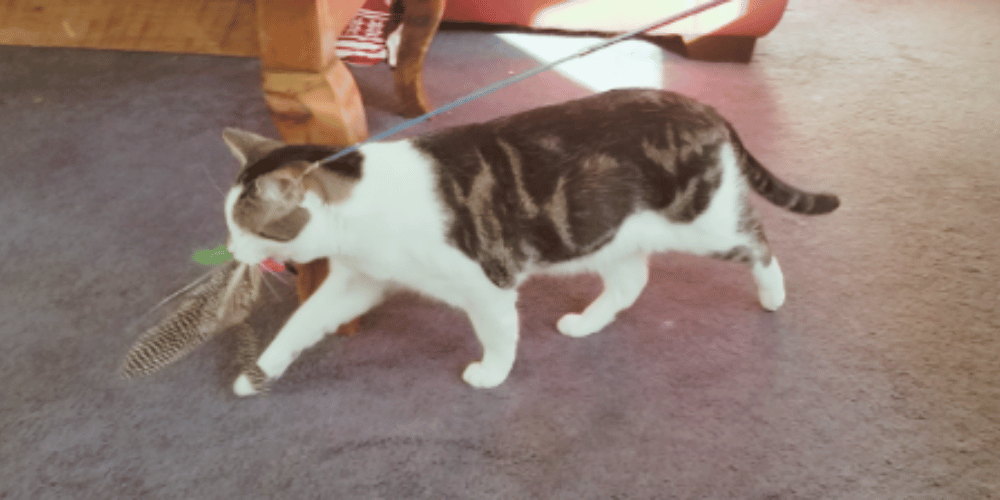
Keeping the Cat's Attention
Cats are notorious for their short attention spans when it comes to toys. However, the unpredictable nature of feather wands keeps them interested and focused during play. The feathers' movement through the air and along the ground captivates a cat's attention in the same way a fluttering bird or scurrying mouse would.
The Joy of the Chase
The act of chasing is a fundamental part of a cat's play behavior. Feather wands create a game that allows cats to exercise their pounce and catch skills. The thrill of the chase provides mental stimulation and physical exercise, which is essential for a cat's well-being. When a cat catches the feathers, it mimics the satisfaction of catching real prey, making the game so much fun for them.
The Psychological Thrill for Felines
Cats are not just simple pets; they are complex creatures with a psychological need for the thrill of the hunt. When a cat catches sight of a wand toy, it's not just a game; it's a simulation of their primal instinct to catch birds and other small prey. This is why feather toys are so effective; they mimic the movement and texture of real prey, triggering an almost euphoric response in felines. The erratic fluttering of a feather on a string can make even the most domesticated kitty feel like a wild cat in the midst of a hunt.
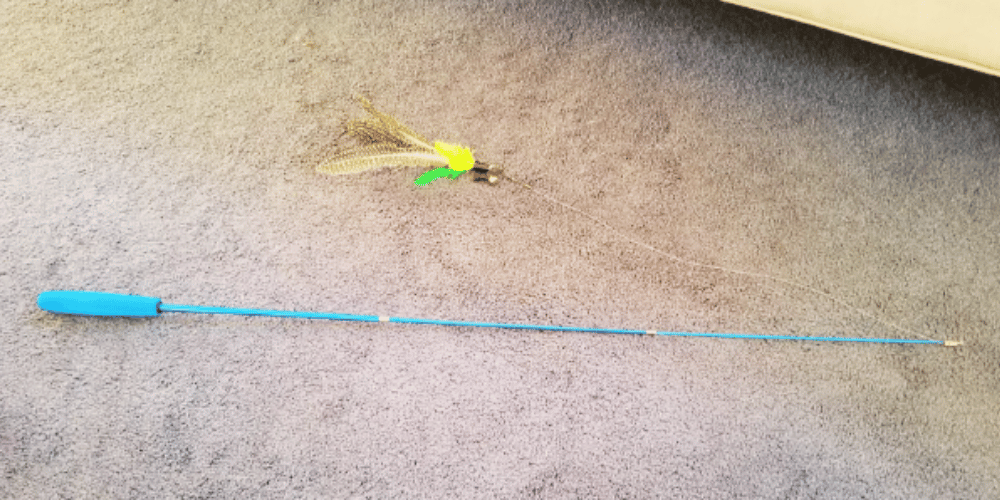
The psychological satisfaction a cat gets from this play is akin to the fulfillment humans feel after solving a complex problem or winning a game. When your cat likes to pounce on a feather toy, it's experiencing a form of mental stimulation that keeps its mind sharp and focused. This is particularly important for indoor cats, who may not have as many opportunities to exercise their hunting skills. By providing a wand toy, you're not only entertaining your kitty but also helping to maintain its mental well-being.
The Instinctual Appeal of "Prey" Toys
Cats are natural hunters, and toys that mimic the movement of prey, such as feather wands, tap into their instinctual desire to stalk and hunt. When a feather wand flies through the air and lands with a flutter, it resembles the erratic movements of a bird or insect, which can be irresistible to a cat. This is why cat toys that can fly and then appear to be caught provide such a thrill. They offer a safe and controlled way for domestic cats to express their innate predatory behaviors, keeping them mentally stimulated and physically active.
For example, when a cat spots a feather wand skimming across the floor, their body language changes almost immediately. Their pupils dilate, their ears perk up, and their focus narrows to the "prey" in front of them. This level of engagement shows how effective these toys are at capturing a cat's attention. It's a joy to watch as they pounce and leap, fully immersed in the game. This type of play not only entertains your cat but also helps to develop their agility and coordination.
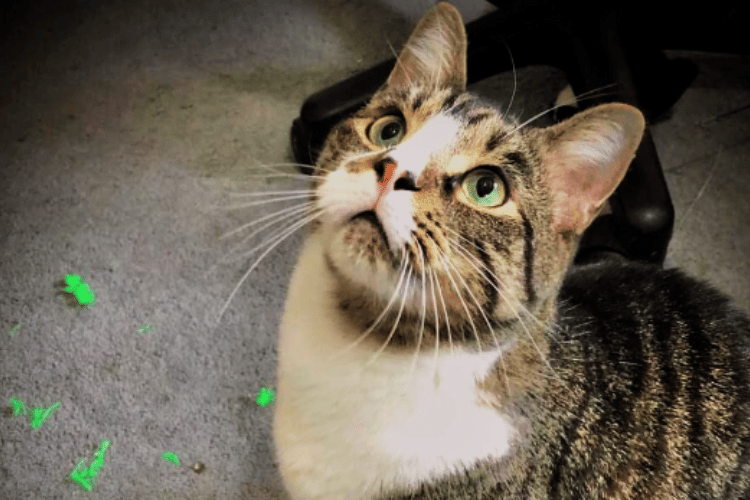
The Connection Between Domestic and Wild Cats
While domestic cats enjoy the comfort of home life, they share many traits with their wild ancestors. Observing wild cats can give us insights into the behaviors of our household pets. In the wild, cats spend a significant amount of time hunting for food. The act of chasing, pouncing, and ultimately catching their prey is a complex process that domestic cats still feel compelled to enact, even though their meals come from a bowl.
Take, for instance, the way a house cat reacts to a feather wand. Their hunting sequence is a condensed version of what a wild cat experiences in nature. The feather wand's movement simulates the flutter of a bird's wings or the scurrying of a small rodent, triggering the cat's natural hunting instincts. This is why cat toys that mimic these aspects of wild prey are so effective in keeping a cat's attention and providing them with a fulfilling play experience. It's a direct connection to their wild roots, played out in the safety of their home environment.
The Evolutionary Perspective of Play
From an evolutionary standpoint, the behaviors exhibited by kittens with their toys are not just cute antics; they are essential training for survival. In the wild, cats need to learn how to kill efficiently, and play is a critical part of that learning process. When you see your cat catch a feather wand and fiercely bite it, it's practicing the kill bite that would be used to dispatch prey quickly. This is why kittens often seem to have an endless supply of energy for play; they are hardwired to practice these skills.
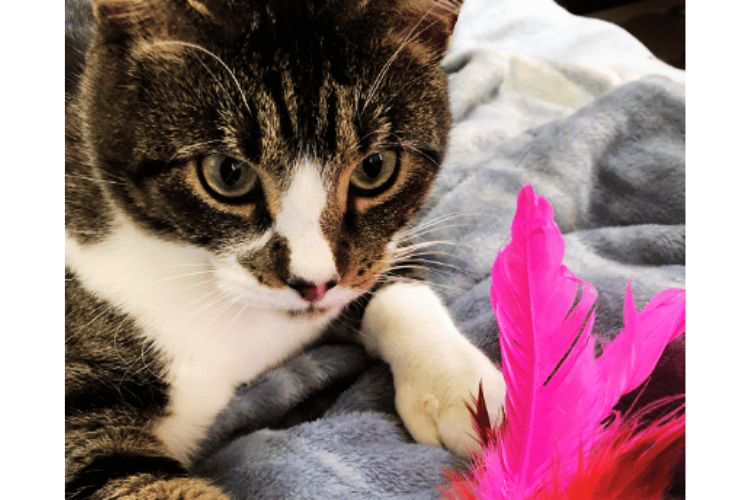
Even though domestic cats are not typically required to hunt for their meals, these instincts are still present. That's why a simple cardboard box can become the best cat toy, as it provides an opportunity for your cat to stalk and ambush, just as it would in a more natural environment. When a cat is bored, it may not just be a lack of entertainment—it's a lack of environmental enrichment that satisfies their instinctual drives. By understanding these evolutionary needs, humans can better cater to their feline friends, ensuring happier and healthier lives.
The Role of Sensory Stimulation
Feather wands engage multiple senses, including sight, touch, and hearing. The visual appeal of feathers moving through the air, the tactile sensation of catching them with their paws, and the sound they make when rustling all contribute to the toy's attractiveness. This multi-sensory experience is a significant reason why cats love feather wands so much.
The Benefits of Regular Play
Regular play sessions with feather wands can help cats burn off excess energy, reducing the likelihood of destructive behavior in the house. It's also an excellent way for cats to maintain a healthy weight and muscle tone. Engaging in play helps to keep a cat's reflexes sharp and can alleviate stress and anxiety.
Variety is the Spice of Life
Cats can grow tired of the same toys, which is why it's essential to rotate their playthings regularly. Introducing new feather wands or other items can reignite a cat's interest in play. This variety helps to keep play sessions fresh and exciting, ensuring that your cat remains engaged and active.
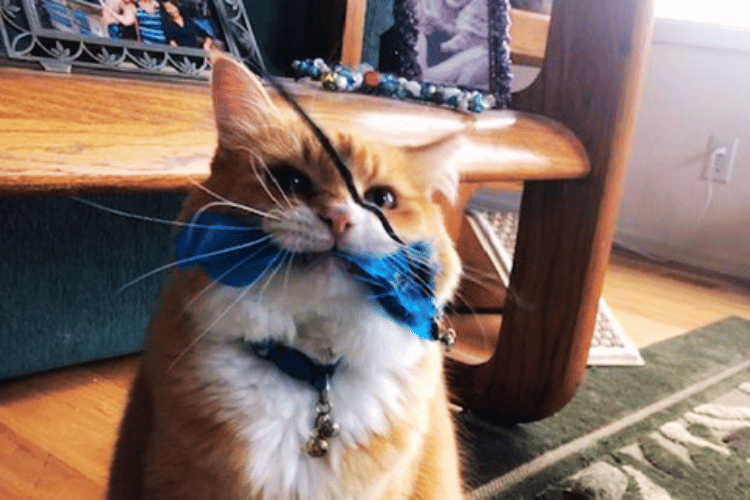
Encouraging Natural Behaviors
Feather wands allow cats to express their natural behaviors in a safe and controlled environment. By mimicking the actions of hunting and capturing prey, these toys provide an outlet for instincts that domestic cats may not otherwise have the opportunity to fulfill. This can lead to a happier and more content pet.
The Social Aspect of Play
Playing with your cat and a feather wand is not just about physical exercise; it's also a social activity. Cats are social animals, and interactive playtime helps to reinforce the social bond between cat and human. It's a time for pet owners to give their undivided attention to their feline friends, which can be incredibly rewarding for both parties.
Bonus Tip: Caring for Your Cat's Toys
To keep your cat interested in their feather wands, it's essential to take good care of the toys. Replace worn out toys to ensure they remain enticing, and store them out of sight when not in use to maintain their novelty. A well-maintained toy collection can keep your cat's playtime exciting and enriching.
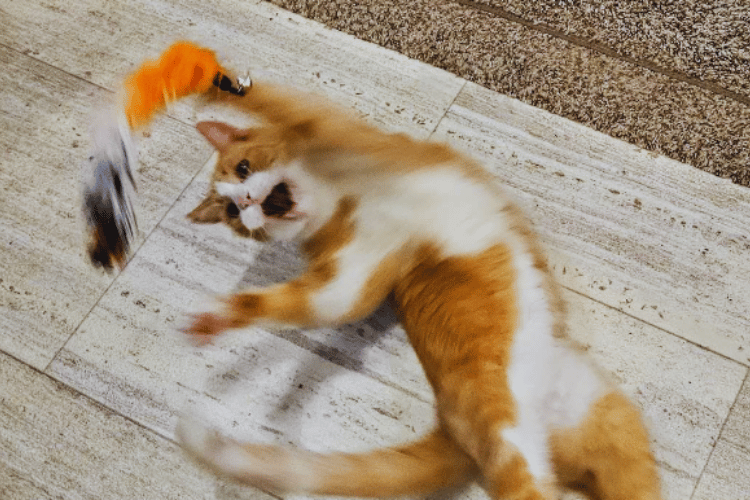
Summary
Feather wands are more than just a simple toy; they are a gateway to a world of instinctual satisfaction and joy for cats. By understanding why cats are so drawn to these toys, pet owners can provide better enrichment and care for their feline friends. Regular play with feather wands taps into a cat's natural hunting instincts, keeps them physically and mentally stimulated, and strengthens the bond between pet and human. So next time you pick up a feather wand, know that you're not just playing—you're catering to your cat's deepest instincts and needs.
FAQ Section
Q: How often should I play with my cat using a feather wand? A: Aim for daily play sessions, as regular play is crucial for your cat's physical and mental health. Even short sessions of 10-15 minutes can make a significant difference.
Q: Can feather wands help with my cat's behavioral issues? A: Yes, interactive playtime with feather wands can help alleviate stress, boredom, and anxiety, which can reduce behavioral issues such as aggression or destructive behavior.
Q: What should I do if my cat loses interest in their feather wand? A: Try rotating the toy with other items or introducing new feather wands to keep things interesting. Also, ensure you're engaging in play in a way that mimics the unpredictable movements of prey to keep your cat's attention.
Thank you for visiting LegitLists we hope this helps you make a legitimate choice!






